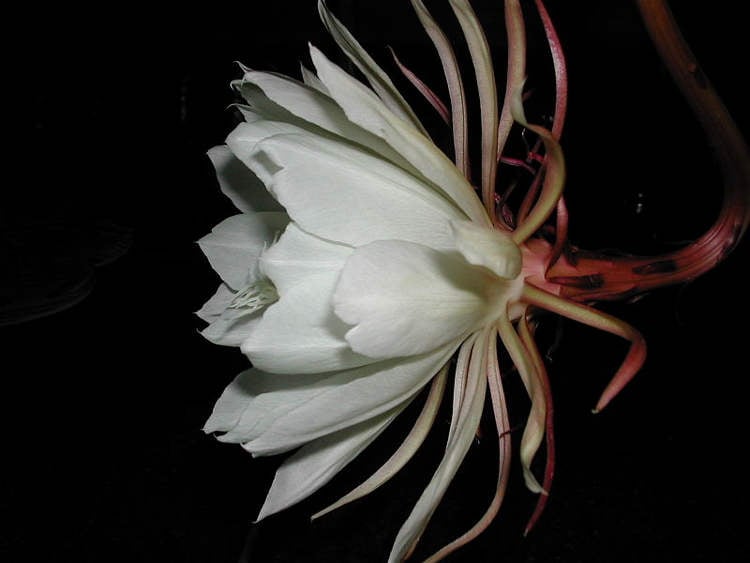Epiphyllum Oxypetalum is a popular species of cactus famous for producing large, fragrant, white flowers only one night per year.
‘Queen of the Night’ is only a nickname, but one that fits Epiphyllum Oxypetalum perfectly. Unlike the several species commonly referred to as Night-Blooming Cereus which also bloom at night time, producing large, fragrant flowers over several weeks, Epiphyllum Oxypetalum only blooms one night a year, for a couple of hours, with its large, waxy flowers withering before sunrise. The bloom of a Queen of the Night is a rare event, one that draws crowds of flower enthusiasts to the jungles of Mexico, Central America and the Antilles for a chance to witness it in person.

Photo: Imuzak/Wikimedia Commons
The flowering of a Queen of the Night is such a rare event that even owners of such a plant can consider themselves lucky for having witnessed it at least once in their lives. Some have never seen the event, despite growing the cactus for years.
Anticipating the flowering of this cactus is going to occur is a tough challenge, but according to most sources we checked, the event occurs on spring or summer nights. Some say it happens on nights with a full moon or around such times, while others say the plant blooms after heavy rains.
Adding to the allure and reputation of the Queen of the Night, the large, waxy flowers are said to be some of the most fragrant in the world, drowning the air around them with an irresistible aroma. Sadly, this only lasts for one or two hours, after which the impressive flowers start to whither. The scent of this elusive flower is often compared to that of magnolia or gardenia flowers.
For most of the year, Epiphyllum Oxypetalum a.k.a. the orchid cactus, looks like a giant cluster of cactus stems either crawling on the ground or on any sort of support, but for one night a year, all of its flowers open at the same time to maximize pollination chances, and it truly turns into a Queen of the Night.
The flowers of the orchid cactus only open at night because bats are the plant’s main pollinator, but scientists have yet to establish why this only occurs one night per year.












